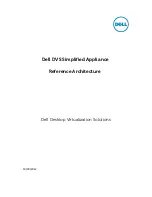
Crestron
e-Control
®
Software
CAT 5
- ANSI/EIA (American National Standards Institute/Electronic Industries
Association) Standard 568 is one of several standards that specify “categories” (the
singular is commonly referred to as “CAT”) of twisted pair cabling systems (wires,
junctions, and connectors) in terms of the data rates that they can sustain. CAT 5 cable
has a maximum throughput of 100 Mbps and is usually utilized for 100BaseTX
networks.
CAT 5e
- The additional cabling performance parameters of return loss and far end
crosstalk (FEXT) specified for 1000BASE-T and not specified for 10BASE-T and
100BASE-TX are related to differences in the signaling implementation. 10BASE-T
and 100BASE-TX signaling is unidirectional—signals are transmitted in one direction
on a single wire pair. In contrast, Gigabit Ethernet is bi-directional—signals are
transmitted simultaneously in both directions on the same wire pair; that is, both the
transmit and receive pair occupy the same wire pair.
CPU
(
C
entral
P
rocessing
U
nit) - The computing part of the computer. Also called the
“processor,” it is made up of the control unit and ALU.
CSMA/CD
(
C
arrier
S
ense
M
ultiple
A
ccess/
C
ollision
D
etection) - The LAN access
method used in Ethernet. When a device wants to gain access to the network, it checks
to see if the network is quiet (senses the carrier). If it is not, it waits a random amount
of time before retrying. If the network is quiet and two devices access the line at
exactly the same time, their signals collide. When the collision is detected, they both
back off and each waits a random amount of time before retrying.
Daisy Chain
- Connected in series, one after the other. Transmitted signals go to the
first device, then to the second, and so on.
Database
- A database is a collection of data that is organized so that its contents can
easily be accessed, managed, and updated.
Data Packet
- One frame in a packet-switched message. Most data communications is
based on dividing the transmitted message into packets. For example, an Ethernet
packet can be from 64 to 1518 bytes in length.
Default Gateway
- The routing device used to forward all traffic that is not addressed
to a station within the local subnet.
DHCP
(
D
ynamic
H
ost
C
onfiguration
P
rotocol) - A protocol that lets network
administrators centrally manage and automate the assignment of Internet Protocol (IP)
addresses in an organization's network. Using the Internet’s set of protocol (TCP/IP),
each machine that can connect to the Internet needs a unique IP address. When an
organization sets up its computer users with a connection to the Internet, an IP address
must be assigned to each machine.
Without DHCP, the IP address must be entered manually at each computer and, if
computers move to another location in another part of the network, a new IP address
must be entered. DHCP lets a network administrator supervise and distribute IP
addresses from a central point and automatically sends a new IP address when a
computer is plugged into a different place in the network.
DHCP uses the concept of a “lease” or amount of time that a given IP address will be
valid for a computer. The lease time can vary depending on how long a user is likely to
require the Internet connection at a particular location. It’s especially useful in
education and other environments where users change frequently. Using very short
leases, DHCP can dynamically reconfigure networks in which there are more
Reference Guide – DOC. 6052
Crestron e-Control®
•
47
















































